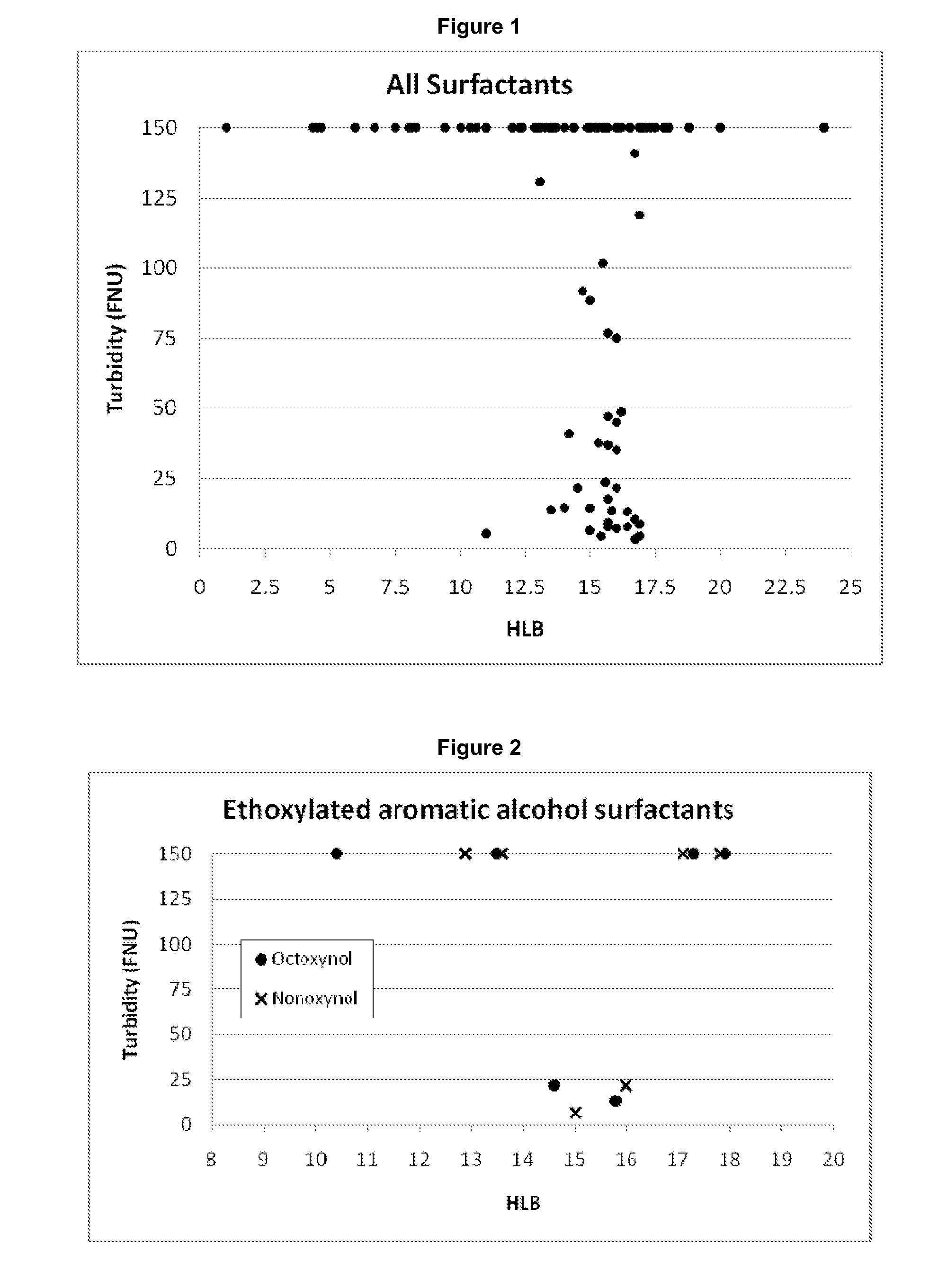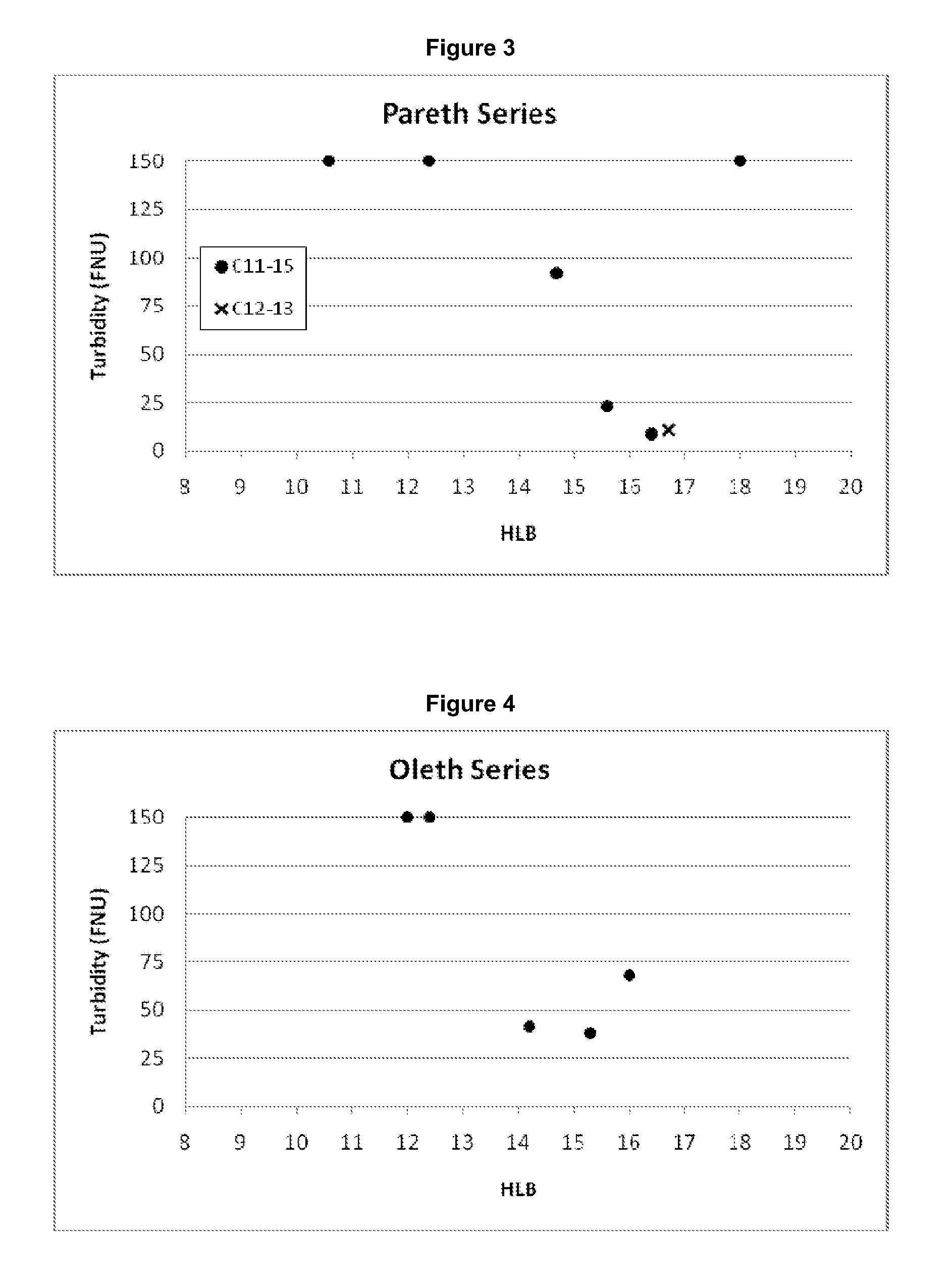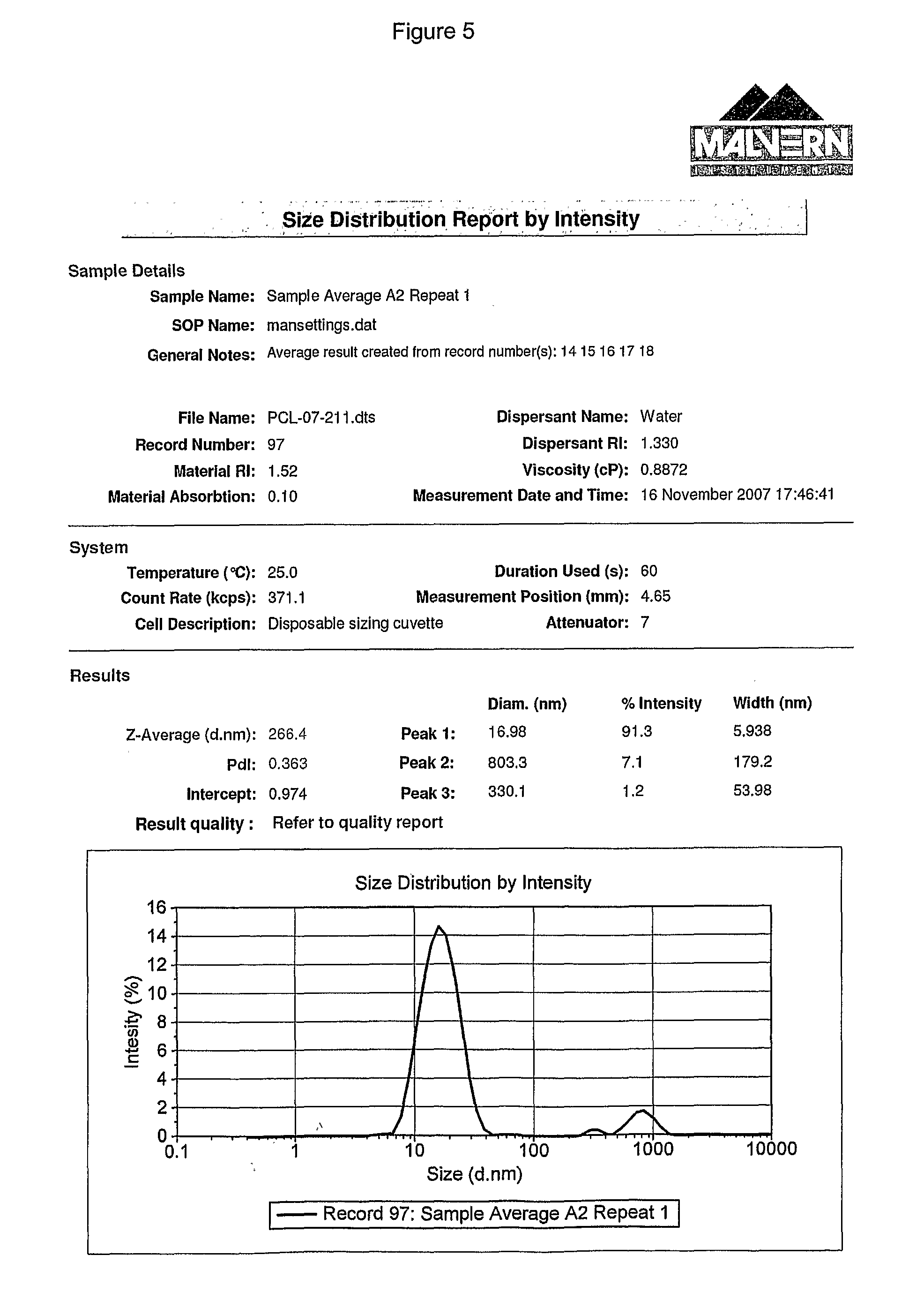Compositions comprising macromolecular assemblies of lipid and surfactant
a technology of macromolecular assemblies and surfactants, which is applied in the field of compositions comprising macromolecular assemblies of lipids and surfactants, can solve the problems of cyclodextrins having a low loading capacity, liposomes and niosomes suffering from lack of clarity, and all of these systems have particular drawbacks, so as to increase the solubility of hydrophobic active agents of surfactants
- Summary
- Abstract
- Description
- Claims
- Application Information
AI Technical Summary
Benefits of technology
Problems solved by technology
Method used
Image
Examples
example 1
The Use of Surfactants and Lipid in the Formation of Macromolecular Complexes of the Invention
[0379]A range of surfactants were tested for their suitability to be used in the present invention, as indicated by their ability to solubilize a lipid mixture through the formation of macromolecular complexes.
Method
[0380]Each surfactant was tested using a standard lipid emulsion containing 1% 90H and ca. 0.01% S LPC cosurfactant (incorporated in the form of 0.05% SL 80-3).
[0381]A stock emulsion of lipid was prepared at double the desired final concentration (i.e. containing 2% 90H and 0.1% SL 80-3). Briefly, to the appropriate volume of warm water (ca. 60° C.), SL 80-3 was added. Heating and stirring was maintained for approximately 15 minutes before the mixture was homogenised for around 1 minute at 13,000 RPM (POLYTRON PT 3100 Homogeniser). 90H was then added gradually, with heating and stirring maintained throughout and for a further 45 minutes after completion. The mixture was then hom...
example 2
The Use of the Exemplary Surfactants with a Range of Natural Lipid Mixtures in the Formation of Macromolecular Complexes of the Invention
[0559]In light of the results of Example 1, and the knowledge that certain surfactants are capable of forming macromolecular complexes of the invention, the suitability of a range of natural lipid extracts for use in the present invention was tested. A number of commercially available lipid compositions derived from soyabean were analyzed.
Method
[0560]Samples were prepared in water by an analogous procedure to that described in Example 1. A range of aqueous solutions containing 2.5% surfactant and 1% lipid were produced (note the absence of co-surfactant in this case). A further sample was prepared using a mixture of 1.25% of each of two surfactants (i.e. total surfactant 2.5%) together with 1% lipid.
[0561]For a quantitative analysis of the clarity of aqueous solutions of surfactant and lipid mixtures, samples were examined using a turbidity meter (...
example 3
The Use of a Co-Surfactant in Compositions of the Invention
[0584]As demonstrated above, surfactants are capable of interacting with lipids to form macromolecular surfactant / lipid complexes. Although there will generally be an insubstantial level of disruption to the passage of light in compositions of the invention, the addition of a co-surfactant was tested as a means of ensuring that solutions were completely clear.
Method
[0585]Samples containing co-surfactant were prepared according to the general procedure described in Example 1.
[0586]A stock emulsion of lipid was prepared at double the desired final concentration (i.e. containing 2% 90H and 0.1% SL 80-3). Briefly, to the appropriate volume of warm water (ca. 60° C.), SL 80-3 was added. Heating and stirring was maintained for approximately 15 minutes before the mixture was homogenised for around 1 minute at 13,000 RPM (POLYTRON PT 3100 Homogeniser). 90H was then added gradually, with heating and stirring maintained throughout and...
PUM
| Property | Measurement | Unit |
|---|---|---|
| diameter | aaaaa | aaaaa |
| molecular weight | aaaaa | aaaaa |
| diameter | aaaaa | aaaaa |
Abstract
Description
Claims
Application Information
 Login to View More
Login to View More - R&D
- Intellectual Property
- Life Sciences
- Materials
- Tech Scout
- Unparalleled Data Quality
- Higher Quality Content
- 60% Fewer Hallucinations
Browse by: Latest US Patents, China's latest patents, Technical Efficacy Thesaurus, Application Domain, Technology Topic, Popular Technical Reports.
© 2025 PatSnap. All rights reserved.Legal|Privacy policy|Modern Slavery Act Transparency Statement|Sitemap|About US| Contact US: help@patsnap.com



